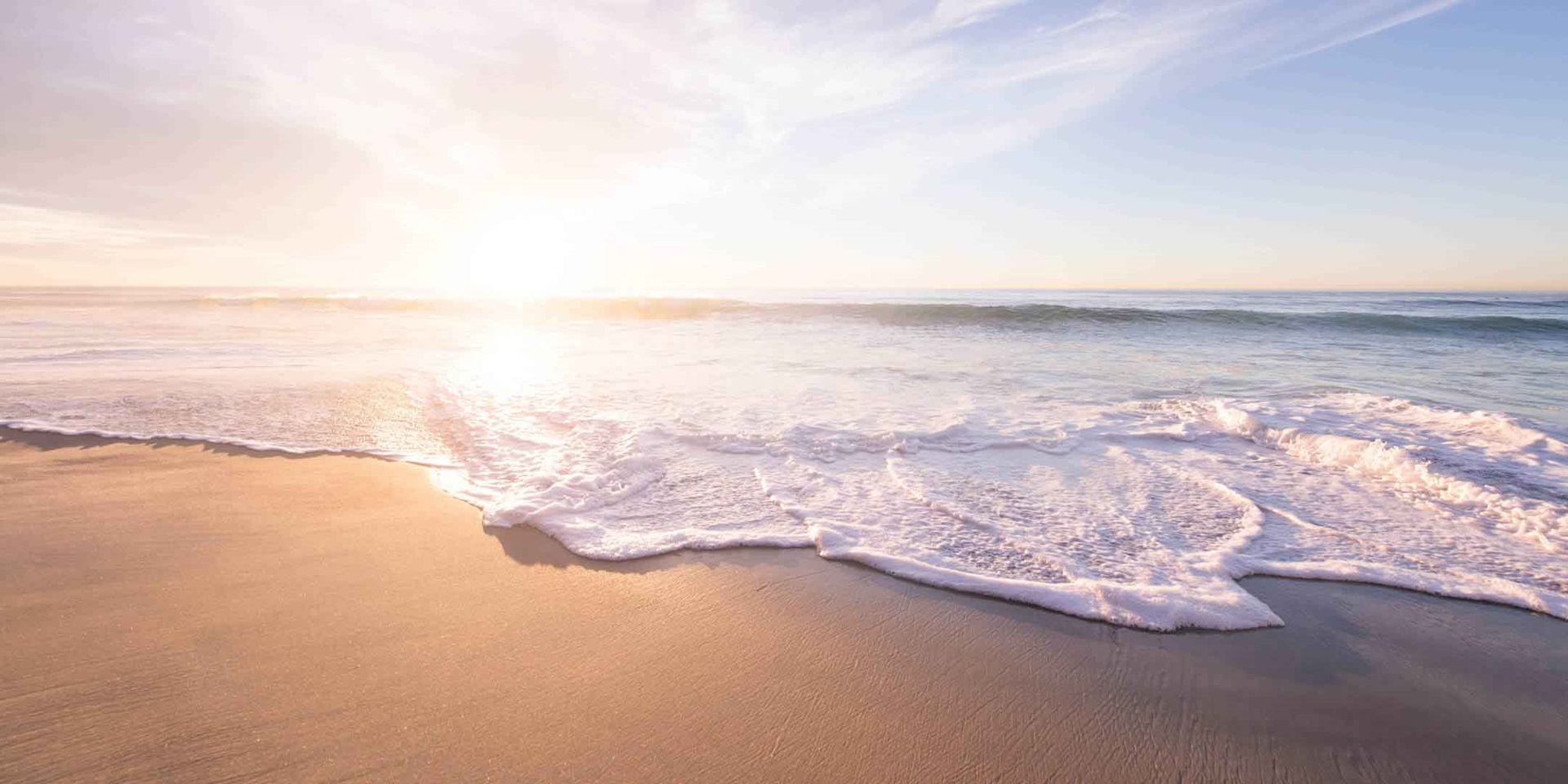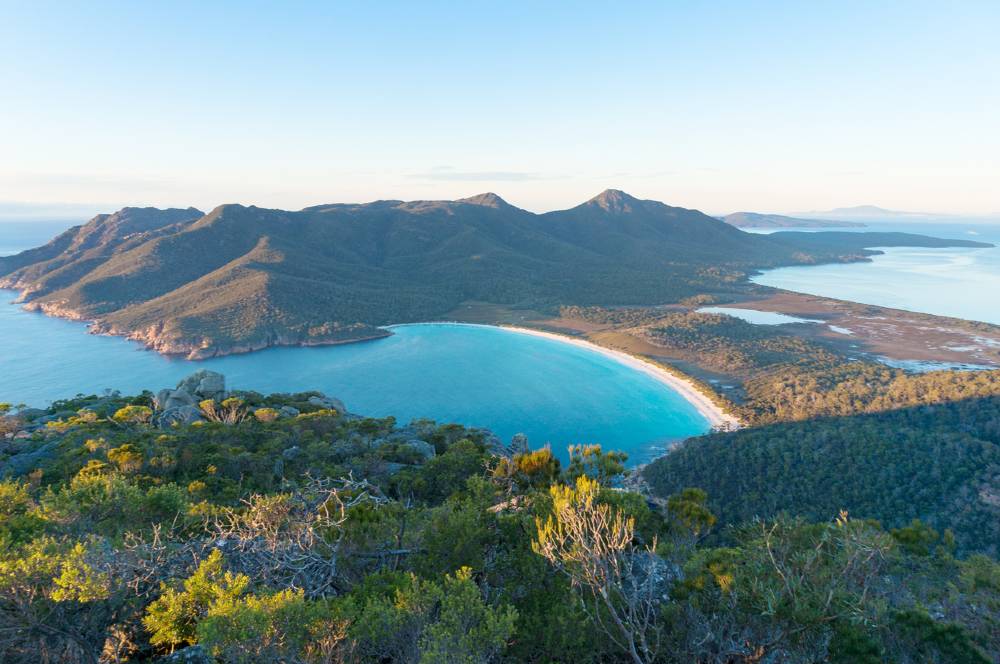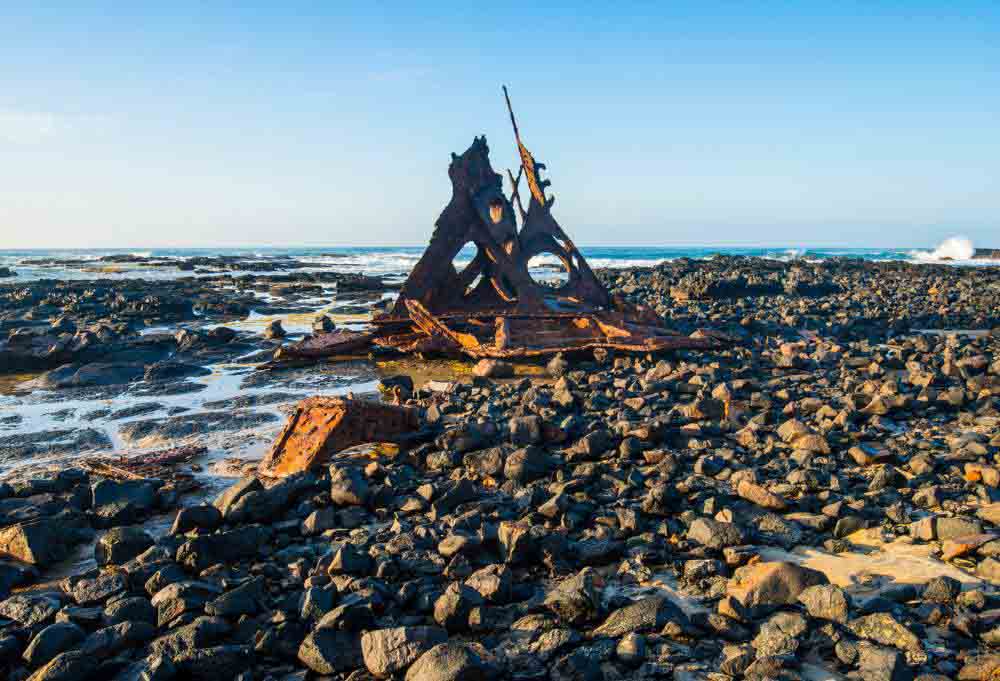
With over 10,000 beaches dotting our coastlines, it’s clear that Australia has a lot of surf, sand and sun to go around! If you don’t want to be surrounded by thousands of beach-goers this summer, we’ve narrowed down our favourite secluded beaches so you can sunbathe or swim in relative peace!
1. Store Beach, New South Wales
Store Beach is one of Sydney’s best-hidden treasures, aided by the fact you can only get there by water! Located near Manly, this secluded beach is the perfect place to relax and bask in the sun. Don’t fret if you don’t have a boat, you can hire a kayak at Manly Wharf and paddle your way there in about 20 minutes.

The picturesque Wineglass Bay in Tasmania. Image via iStock
2. Wineglass Bay, Tasmania
Part of the Freycinet Peninsula, Wineglass Bay is one of Tasmania’s most extraordinary places. With its crescent white sand, dazzling blue-green ocean and the Hazards Mountain range that surrounds it – it’s easy to see why this is Tasmania’s most photographed area. You can access this pristine beach by either walking from the Freycinet National Park, sailing, by water taxi or even flying so you can take in the spectacular aerial view.
3. Turtle Bay, Western Australia
Located in the most western point of Australia on Dirk Hartog Island, Turtle Bay features a stunning stretch of white sand where loggerhead turtles nest in December and January. Feel free to swim, snorkel or relax the day away and marvel at the coral-filled waters and towering cliffs. Turtle Bay isn’t the easiest place to access, with lots of driving and a barge trip required to reach the island – but it’s definitely worth the extra effort!
4. Kitty Miller Bay, Victoria
Not only does this picturesque cove lie at the base of an extinct volcano, but it also contains the shipwreck of the 1906 SS Speke. Kitty Miller Bay is ideal for surfing and snorkelling, with great waves during high tide and stunning rock pools during low tide. A 90-minute drive from Melbourne, this rocky outcrop makes for an intriguing adventure.

The shipwreck of SS Speke, located on Kitty Miller Bay, Victoria. Image via iStock
5. Nudey Beach, Queensland
Recognised as one of Australia’s premier beaches, this spectacular white coral beach is covered in tropical rainforest and is close to the Great Barrier Reef. Whether you want to swim, snorkel or soak up the sun, this pristine beach is ideal as you'll likely only share it with a small number of visitors. Laying on the south-west shores of Fitzroy Island, Nudey Beach is only a 45-minute ferry ride from Cairns. Be sure to pack your swimmers because despite its name, Nudey Beach is not a nudist beach.
Leave nothing but your footprints behind …
We can often take our beaches and oceans for granted, but it's important we do everything possible to minimise our impact when visiting the beach this summer (and throughout the year). Here are some useful tips to help leave the beach in pristine condition:
- Take 3 for the sea – Take 3 (or more) pieces of rubbish when you leave the beach as this will help reduce plastic pollution in our oceans and help save our wildlife.
- Dispose of your own rubbish properly – If you decide to pack a picnic, try and bring reusable utensils and water bottles rather than plastic. If you can't, make sure you dispose of your rubbish at home rather than in the bins near the beach, this way the wind won't blow the rubbish into the ocean or around the beach.
- Leave what you find – As tempted as you might be, don't take seashells or sand as this can damage our coastal ecosystems over time.
- Respect the wildlife – Keep an eye out for sea turtle or seabird nesting areas and if you do spot some, be sure to keep a good distance. Make sure you don't approach, chase or feed the wildlife either.
- Choose reef-safe sunscreen – When you wear chemical-based sunscreen to the beach, these damaging chemicals are then carried into the ocean. When buying your sunscreen, be sure to avoid products that contain oxybenzone and octinoxate, as these two chemicals are harmful to corals and can cause sunscreen-induced coral bleaching.
